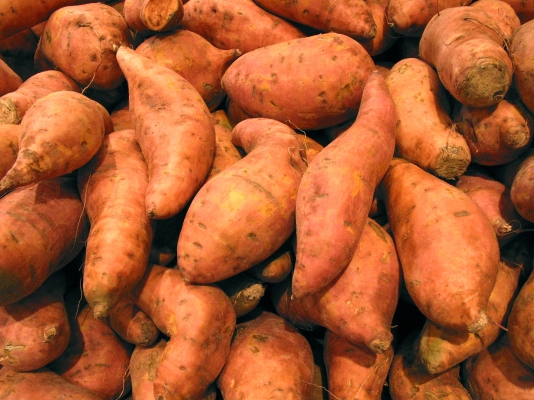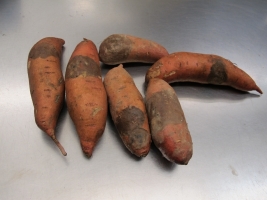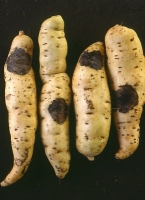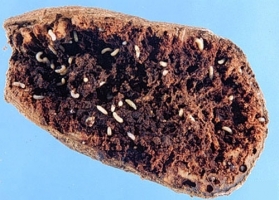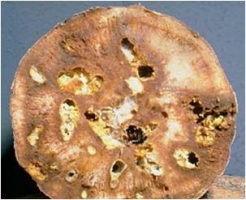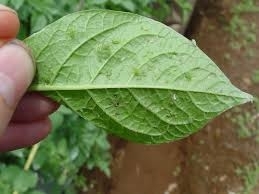Punjab Sweet Potato-21: The vines of this variety are medium long in length. It has broad shape and dark green color leaves, long and thick stem, 4.5cm inter nodal length and has 9cm petiole length. It contains deep red color tubers having white flesh which is 20cm long and 4cm wide. The variety gets mature within 145 days. The average weight of tuber is 75g. The tuber contains 35% of dry matter and 81mg/g of starch. It gives an average yield of 75 qtl/acre.
Other state varieties:
Varsha: It is recommended to grown in Maharashtra. It is suitable to grown in rainy season. It gives an average yield of 62.5 qtl/acre.
Konkan Ashwini: This variety is developed to be cultivated in Maharashtra. It is short duration crop and gives high yield.
Sree Arun: It is an early maturing variety having pink color skin and cream color flesh. The variety is developed by Central Tuber Crop Research Institute (CTCRI), Sreekariyam. It gives an average yield of 83-116 qtl/acre.
Sree Kanaka: The variety is developed by Central Tuber Crop Research Institute (CTCRI), Sreekariyam. It has cream color skin tuber which has dark orange color inner flesh. It gives an average yield of 41-62.5 qtl/acre.
Sree Varun: The variety is developed by Central Tuber Crop Research Institute (CTCRI), Sreekariyam. It contains cream color skin of the tuber. It is an early maturing variety which gets mature within 90-100 days. It gives an average yield of 80-110 qtl/acre.
Improved varieties:
H-41, H-42, Co 3, Co CIP 1, Sree Vardhini, Sree Rethna, Sree Bhadra, Sree Nandini, Kanjanghad, Gouri, Sankar and Kiran.

